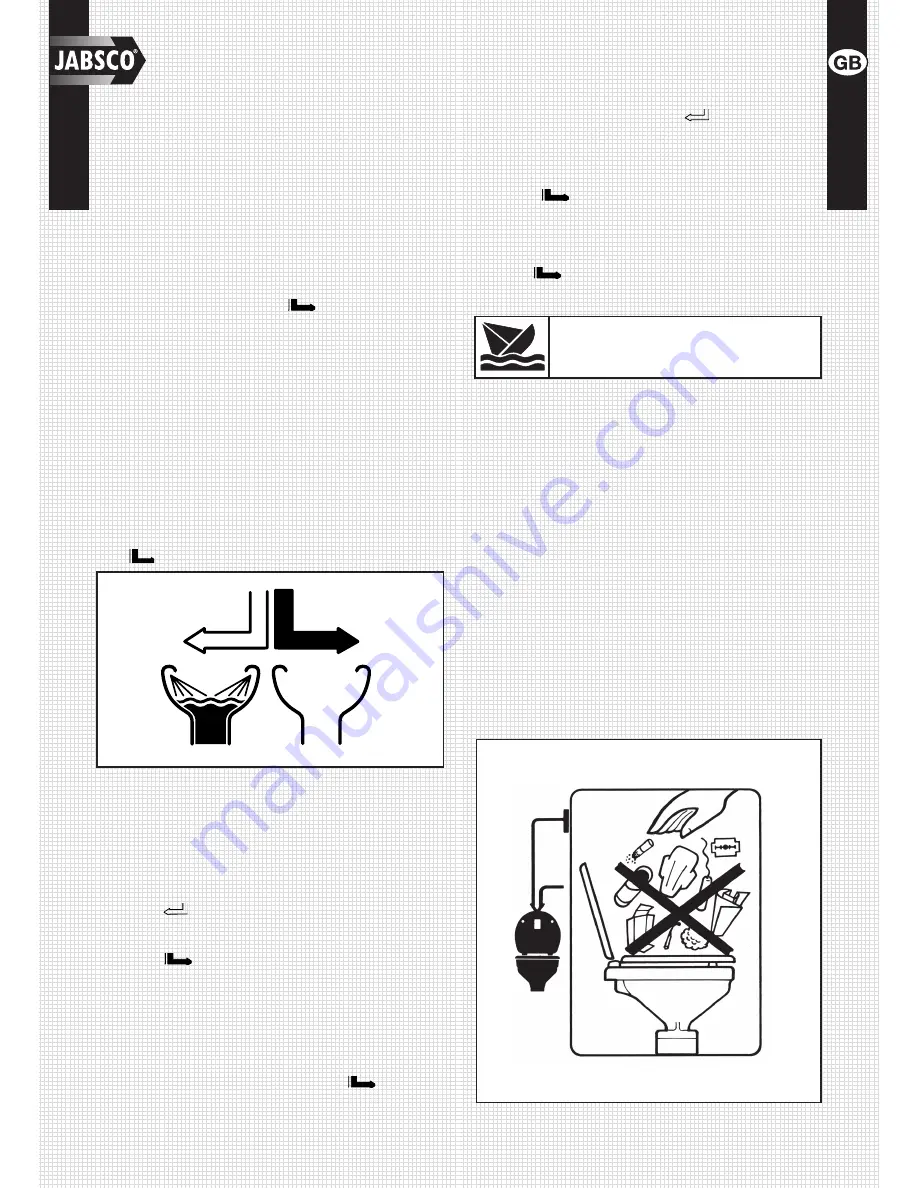
5
6. Testing
Refer to the Operating Instructions and follow the procedure
"2 Normal use".
•
If the flushing pump is hard to prime half fill the bowl
with fresh water.
7. Safety
Ensure that this INSTRUCTION MANUAL reaches the owner,
skipper or operator of the craft as it contains essential safety
information.
ON COMPLETION OF INSTALLATION:
- SHUT THE FLUSH CONTROL (
)
- CLOSE BOTH SEACOCKS
Operating Instructions
The toilet is one of the most used pieces of equipment on
your boat. Correct operation of the toilet is essential for the
safety and comfort of your crew and craft.
1. First use
After periods without use the toilet may benefit from
lubrication.
Open inlet and outlet seacocks (and secondary valves if
•
fitted).
Half fill the bowl with warm fresh water.
•
Keeping the Flush Control Lever (key 23) in the Shut
•
(
) position, pump out the warm water.
2. Normal use
Open inlet and outlet seacocks (and secondary valves if
fitted).
Before use, ensure that there is enough water in the
•
bowl to prevent the toilet paper becoming compacted at
the bottom of the bowl.
If the bowl is empty, move the Flush Control Lever (key 23) to
the Open (
) position and pump the handle (key 17) up
and down until the flushing pump is primed and water enters
the bowl.
Then Shut (
) the Flush Control.
Operate the pump with long, smooth strokes for efficient
•
and easy operation.
During use, pump as necessary to keep the contents of
•
the bowl low enough for comfort.
Use good quality hard or soft household toilet paper, but
•
do not use more than necessary.
After use, keep the Flush Control Shut (
•
) and pump
until the bowl is empty.
When the bowl is empty, Open (
•
) the Flush Control
again, and continue to pump until all waste has either
left the boat, or reached the holding tank (allow 7
complete up/down strokes per metre (yard) length of
discharge pipework).
Then Shut (
) the Flush Control and pump until the bowl
is empty. Always leave the bowl empty to minimise odour
and spillage.
AFTER USE:
- SHUT (
) THE FLUSH CONTROL.
- SHUT BOTH SEACOCKS
HAZARD RISK - Accidental Damage
If the toilet is connected to ANY through-hull fittings that are
below the waterline at any time, and if the toilet or pipework is
damaged, water may flood in, causing the craft to sink, which
may result in loss of life.
Therefore, after every usage, both seacocks (or secondary
valves) MUST be shut.
Whenever your craft is unattended, even if only for a very short
period of time, both seacocks (even if secondary valves are
fitted) MUST be shut.
Ensure that ALL users understand how to operate the
•
toilet system correctly and safely, including seacocks and
secondary valves.
Take special care to instruct children, the elderly and
•
visitors.
SHUT SEACOCKS!
NOTE: Do not put anything in the toilet unless you have eaten
it first, except toilet paper. Do not put in: Sanitary Towels, Wet
Strength Tissues, Cotton Wool, Cigarettes, Matches, Chewing
Gum or any solid objects, Petrol, Diesel, Oil, Solvents of any
kind or water more than hand hot.

























